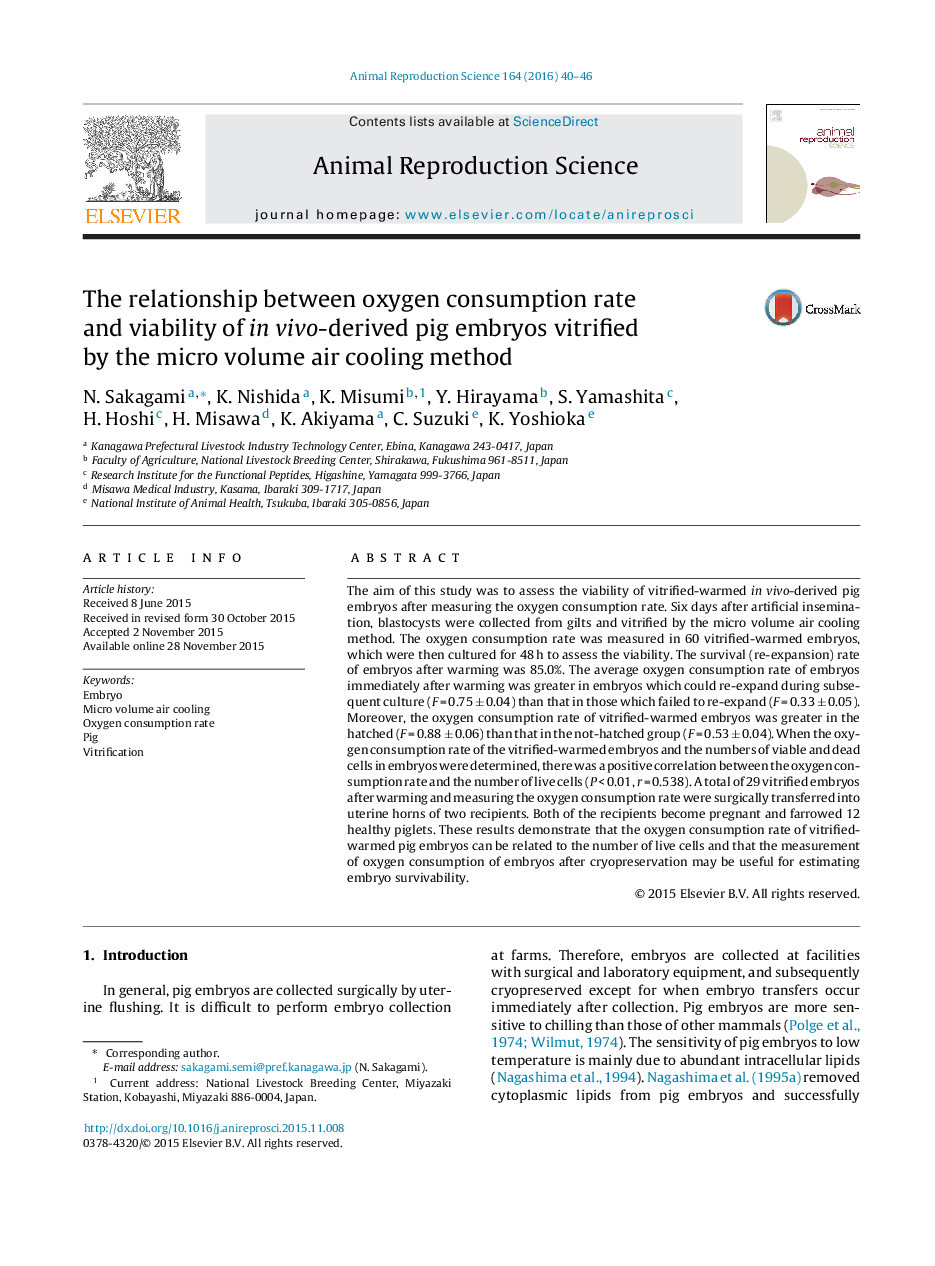| کد مقاله | کد نشریه | سال انتشار | مقاله انگلیسی | نسخه تمام متن |
|---|---|---|---|---|
| 2072562 | 1544713 | 2016 | 7 صفحه PDF | دانلود رایگان |
The aim of this study was to assess the viability of vitrified-warmed in vivo-derived pig embryos after measuring the oxygen consumption rate. Six days after artificial insemination, blastocysts were collected from gilts and vitrified by the micro volume air cooling method. The oxygen consumption rate was measured in 60 vitrified-warmed embryos, which were then cultured for 48 h to assess the viability. The survival (re-expansion) rate of embryos after warming was 85.0%. The average oxygen consumption rate of embryos immediately after warming was greater in embryos which could re-expand during subsequent culture (F = 0.75 ± 0.04) than that in those which failed to re-expand (F = 0.33 ± 0.05). Moreover, the oxygen consumption rate of vitrified-warmed embryos was greater in the hatched (F = 0.88 ± 0.06) than that in the not-hatched group (F = 0.53 ± 0.04). When the oxygen consumption rate of the vitrified-warmed embryos and the numbers of viable and dead cells in embryos were determined, there was a positive correlation between the oxygen consumption rate and the number of live cells (P < 0.01, r = 0.538). A total of 29 vitrified embryos after warming and measuring the oxygen consumption rate were surgically transferred into uterine horns of two recipients. Both of the recipients become pregnant and farrowed 12 healthy piglets. These results demonstrate that the oxygen consumption rate of vitrified-warmed pig embryos can be related to the number of live cells and that the measurement of oxygen consumption of embryos after cryopreservation may be useful for estimating embryo survivability.
Journal: Animal Reproduction Science - Volume 164, January 2016, Pages 40–46
